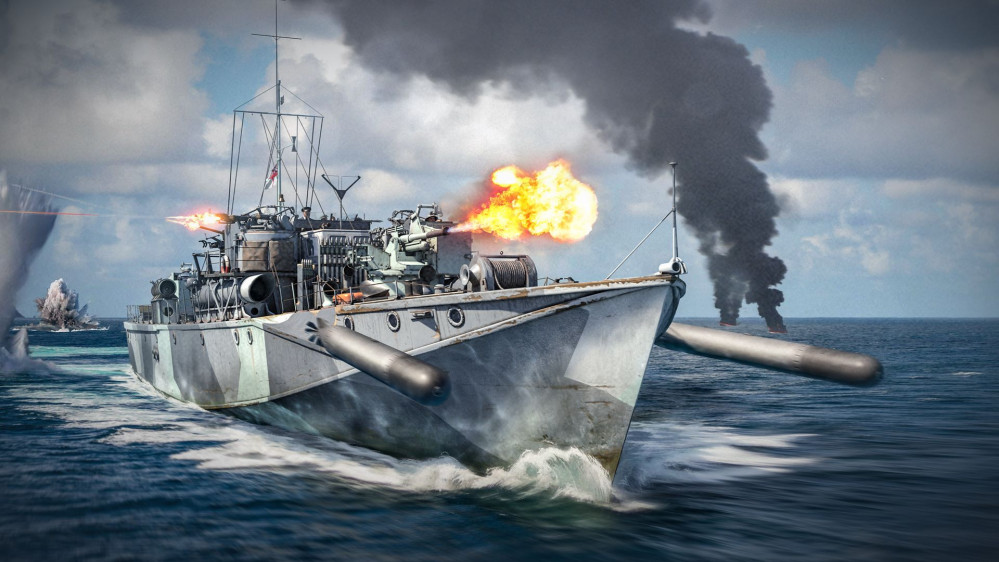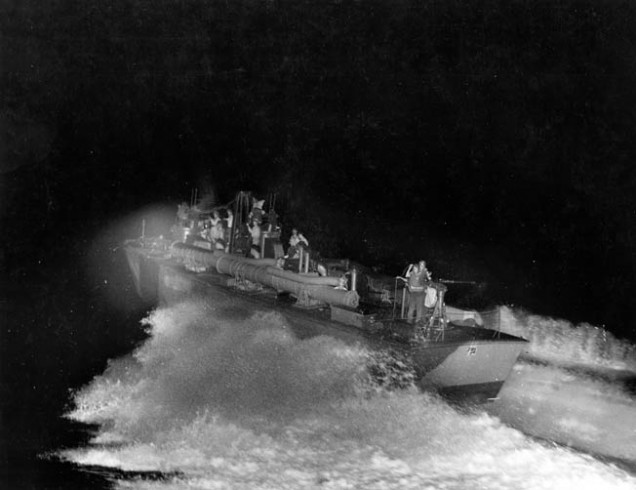
Bob C's Everything you Didnt Want to Know about British Coast Forces and how to play them.
Coastal Forces Tactics Part two game play ideas
Off course having mentioned what actually happened in most of the actions how do you play it?
Now for any of the non historically minded games who have read above and have not stormed off in disgust , pulled their hair out etc .
I know most games now hand wavium spotting.
But spotting and detection but if played right can be made fun, and give lots of tatcical advantages almost as a separate part of the game (I,m thinking how this would work as I write)
If you get the stealth and hidden movement too accurate you end up both sides sailing past each other ( this actually happened in a trial game we had when play-testing my own set of Rules aptly named ‘Dog Boats’.) No this may be historically accurate but not a lot of fun. But without some sort of hidden movement and fog of war , you are going to find your little motor boats are going to be turned to floating plywood before they can get into firing positions for their torps, and even then the target can see the torps coming and try to manoeuvre its way out of the path.
One of the things that comes out of reading the historical engagements was that torpedo boat loss’s often came about because they were surprised by a previously unseen enemy, even when engaged in battle a boat could be surprised by a previously hidden opponent coming out of the night often at quite close and very deadly ranges. This meant that it was not necessarily the wpn with the biggest range but the one able to punch out the most destructive power in a short period that was the most effective.
As can be seen once a boat was speeding up in action its wake made it begin to stick out like as saw thumb , another hidden boat may easily get the jump on it.
Another aspect difficult to game is the friendly fire problem , often escort vessels in the heat of an engagement could miss-identify their own boast as enemy and some quite fierce firefights could result, often allowing the actual enemy to slip away. Many British Accounts mention this of German escorts when they engaged them. Which is not totally surprising as often the Gun-crews on German escorts were not actually Navy but were either Army or Luftwaffe co-opted into the role (particularly on F-lighters and Siebel Ferries) who may not have got there sea legs and may never have seen an MTB/MGB before.
A very basic method in games is just to put the models on the table and then role to see if they spot, but this method does not really reflect the above aspects of the genre.
Now for any of the non historically minded games who have read above and have not stormed off in disgust, pulled their hair out etc.
I know most games now hand wavium spotting rules and detection but if played right can be made fun, if you use Richard Clarkes of Two Fat Lardies you could have a patrol phase almost as a separate part of the game (I,m thinking how this would work as I write).
Now a couple of ideas come to mind , using a variation of Richard Clarkes of Two Fat Lardies patrol phase from chain of Command , moving blinds until they get within a roughly effective spotting range which may be scenario specific based on type of night fog etc . Then role for spotting, if spotted place the actual model a specified distance in any direction from the spot , or take the blind off completely at the controlling players discretion ( he has to be careful in completely removing the blind as each time he does it reduces the no of places he can deploy) and if not place a marker and on idea would be to use any spare plastic model boats of either side, painted in black or grey or even white.
Keeping the Cruel Seas activation dice idea you put in one dice (possibly a different colour)
This acts as the activation point for all that player’s non revealed markers. When pulled that player can move it as a blind or reveal it as part of his force, taking the action at that point and then putting its actual dice in the bag.
This give players the option to stay hidden but suffer a limit to the times they activate or be seen and activate more often. But it should also allow player to activate and draw their opponents attention whilst other ships remain hidden, Give a negative effect on spotting roles, if a ship is actually engaging an enemy.











































































Leave a Reply